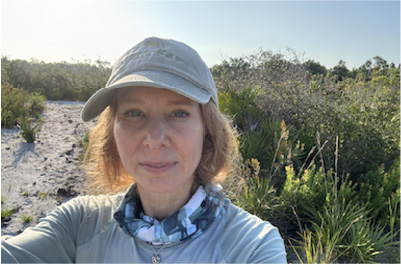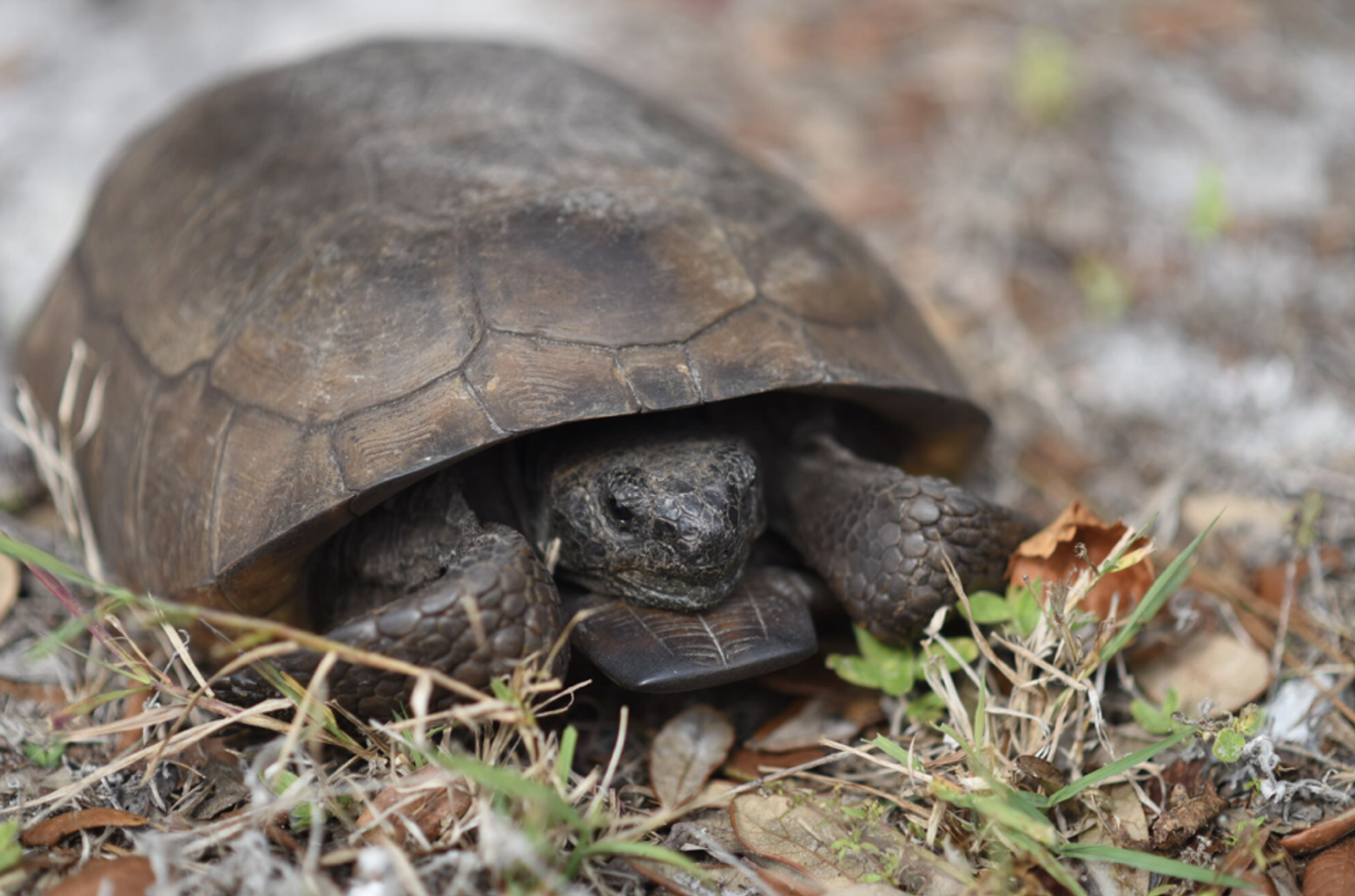Beyond its environmental significance, the gopher tortoise habitat on the University of South Florida Sarasota-Manatee campus has become a vital resource for student learning and undergraduate research. This living laboratory supports ExCeL, USF’s current Quality Enhancement Plan, which emphasizes experiential-centered learning as a way to increase the career readiness of undergraduates. Through hands-on involvement in habitat restoration, ecological monitoring and species conservation, students gain valuable skills and experience that align directly with the plan’s focus areas, particularly undergraduate research and student employment. These meaningful experiences help prepare students for success in their future careers or graduate studies, supporting higher employment rates, improved starting salaries and long-term educational outcomes.
The Sarasota-Manatee campus is home to a unique and important population of about 35 gopher tortoises. They can be observed in the naturally wooded area spanning several acres near the front entrance to campus. These creatures are known for their burrowing habits, which create habitats for themselves and other wildlife. As a federally protected threatened species, gopher tortoises are considered a keystone species, meaning their presence is crucial for the ecosystem's health and stability.
Ryan McCleary, a herpetologist and associate professor of instruction in integrative biology in the College of Arts and Sciences, has overseen the natural gopher tortoise habitat on the Sarasota-Manatee campus for the past 18 months.
A habitat this large is unique for a college to have and is a jewel for our campus.
Ryan McCleary
Herpetologist and associate professor of instruction, USF Sarasota-Manatee
Informal teams of volunteers, including students and members of the USF Sarasota-Manatee Digital Learning team, have worked in recent months to remove such species as mother-in-law’s tongue, Brazilian pepper trees and carrotwood.
"Gopher tortoises prefer dry, sandy soil with some vegetation—but not overgrown," McCleary added. "A habitat this large is unique for a college to have and is a jewel for our campus."

Sarasota-Manatee Integrative Biology Senior Lou Vesser
Lou Vesser, a senior at USF Sarasota-Manatee completing a bachelor's degree in integrative biology, has been working closely with the gopher tortoise habitat on campus. She recruited student volunteers to help improve the site by removing dodder weed, a parasitic vine.
"There was much work required following last fall’s hurricanes—a lot of brush that needed to be cleared," she said. "I’m hoping more people will join the effort this fall to continue cleaning up the natural habitat. We always welcome more volunteers to help us maintain this area for the gopher tortoises."
Making the space on our campus more habitable for the gopher tortoises and ensuring the correct native plants are available for them to forage is something I’m really passionate about.
Lou Vesser
Senior, integrative biology, USF Sarasota-Manatee
A registered nurse for a number of years, Vesser has studied biology for the past 10 years, complementing her interest in terrestrial wildlife, ecology and conservation. She is especially interested in "making the space on our campus more habitable for the gopher tortoises and ensuring the correct native plants are available for them to forage."
McCleary noted that the campus is somewhat distinguished by having habitats for three different species of turtles that have evolved: the gopher tortoises (land dwellers) along the front of campus, pond turtles (freshwater creatures) in the middle of campus and sea turtles (marine reptiles) along the bayfront.
Four undergraduate students will pursue research projects for credit this upcoming semester. Projects include using trail cameras to help identify active burrows and potentially staging light-activated motion sensors to illuminate tunnels that were established to provide safe passage under the roadways.
On the Sarasota-Manatee campus, these ongoing efforts are part of a long-term initiative to protect and preserve the gopher tortoise population. These terrestrial reptiles can live 40 to 60 years—and some even up to 90 years—and typically remain within a defined home range.

Gopher tortoise on Sarasota-Manatee campus.
By integrating research, volunteerism and habitat preservation, the USF Sarasota-Manatee campus has created an immersive educational experience that extends far beyond the classroom. These efforts support the goals of ExCeL by providing students with experiential opportunities that contribute directly to their academic and professional development. Students not only help protect a keystone species, but also gain critical field skills, mentorship and real-world scientific inquiry experience. This model of applied learning demonstrates how environmental stewardship can strengthen career readiness, promote educational success and inspire the next generation of conservation-minded professionals.
